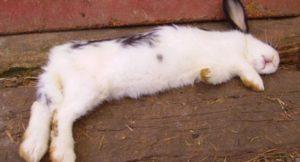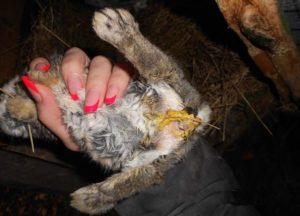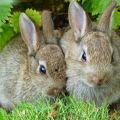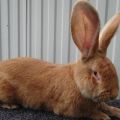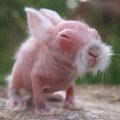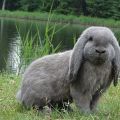Description and characteristics of rabbits of the Hermelin breed and the rules for their maintenance
Germelin is a miniature rabbit breed most often used as pets. This is due to their attractive appearance, beautiful color, unpretentiousness and dimensions, allowing you to keep a pet even in the smallest apartment. These cute rabbits have a good-natured, docile nature, there is no aggression. They easily get used to home conditions and behave in much the same way as other pets - cats, indoor dogs, ferrets.
Origin
Germelin is often called Polish rabbits, but some mistake has obviously crept into this name. There is no single name for the breed in different countries. Although the animals are called Polish, in Poland itself such a breed does not exist, at least at the state level. The same applies to other countries.
In Great Britain, hermelin is called Polish rabbits, although experts believe that it was in this country that they were engaged in breeding work with animals. In the United States, rabbits are called hermelin britannia petite.
Most likely, the breed was bred in Germany at the beginning of the twentieth century. Germelin is periodically confused with Dutch dwarf rabbits, but there is no special external similarity or genetic similarity. The Dutch are true dwarfs, and the hermelin are miniature representatives of the breed specially selected by selection. In addition, Dutch rabbits have a rounded head, smaller dimensions and short, pointed ears. All similarities lie in the same white body color of both Dutch dwarf rabbits and hermelin, as well as in the red shade of the eyes.
Description of Hermelin
Although the animal is miniature in size, it is not a genetically dwarf rabbit. Hermelin has no dwarf gene. The animal is used as an exhibition animal and as an unpretentious and beautiful pet.
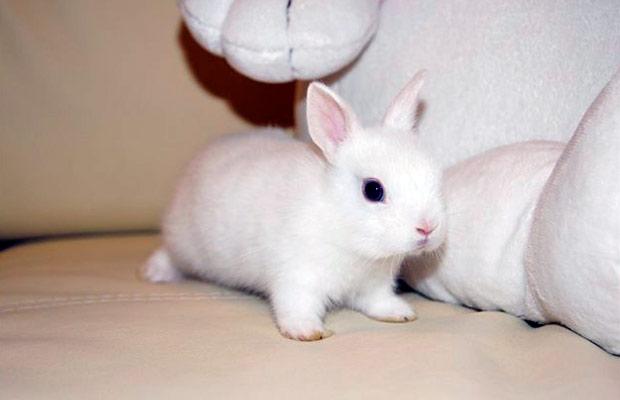
The Polish rabbit has a compact body, short, straight ears close to each other, a small head with puffy cheeks ("sideburns"). Eye color depends on the variety:
- Red eyes are found in hermelin - true albinos.
- Blue-eyed rabbits are not albinos, their unique iris shade is associated with the presence of genes in the genotype of the white Viennese breed.
The color standard for hermelin was originally considered pure white. But the American Rabbit Breeders Association recognized black as appropriate in 1957, later a chocolate shade, and in 1982 a blue tone became legal. The last option was “broken” (spotted) - in 1998.
Main positive and negative aspects
The rabbits of the Polish breed have many advantages:
- Small size, allowing you to keep the animals in apartments.
- Calm, friendly and flexible character.
- Unpretentiousness.
- Economy in keeping - dwarf rabbits eat little.
- The ability to learn to use the litter box like cats.
- The ability to walk in a harness on a leash like a dog.
- Attractive appearance, especially in blue-eyed hermelin.
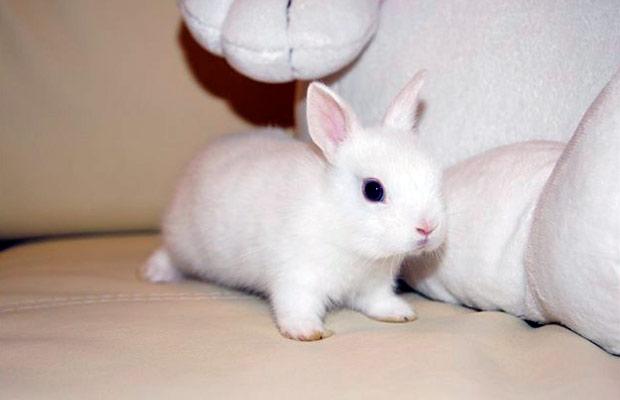
The following properties can be added to negative traits:
- During the rut, males and, less often, females can show aggression towards people and towards their fellows. For indoor rabbits, the situation is corrected by castration.
- The room in the house where Hermelin walks free can be damaged because the rabbit can chew on furniture, baseboards, carpets, cardboard boxes, magazines and books. Wires - electrical and computer ones - are especially dangerous. The animal will not only damage expensive equipment, but can also receive an electric shock, be poisoned by heavy metals or suffer from swallowed pieces of wire and plastic sheath.
If you closely follow the rabbit and create suitable conditions for him, he will become the sweetest and most cuddly pet.
The nuances of keeping and caring for animals
Like other breeds, Polish rabbits do not tolerate heat and direct sunlight, but they cope well with low temperatures if there are no drafts in the room and there is no high humidity.

Animals can chew on everything, therefore, when letting them go for a walk, their actions must be monitored. You should not allow feeding Hermelin from your table - human food, especially bread, is poison for them.
The representatives of the Hermelin breed have compact dimensions, therefore, in severe frosts, you should not walk them outside, especially in wet weather.
There is also a pronounced tendency to tangling, tangling and clogging the digestive organs with hairballs. To prevent this from happening, hermelin is regularly combed out like a cat.
Feeding rules
It is preferable to use ready-made pellets. They are balanced in composition and are highly nutritious, due to which the rabbit is given a quarter cup of compound feed every other day. Additionally, it is necessary to feed hermeline with fresh green feed (in winter, hay). Carrots and apples are a delicacy, they give a little, as they contain too much sugar. Cabbage vegetables, especially white cabbage, should be excluded from the menu. You also need to avoid foods high in starch and sugars. Eating corn in Polish rabbits can lead to gastroenteritis.

Young dandelion leaves, spinach and parsley are a treat for pets. To grind their teeth, Hermelin rabbits need to be fed harsh food, such as tree branches. Animals should always have access to clean water around the clock.
Breeding features of the breed
It is prohibited to bathe rabbits. In the absence of natural grinding, the nails are carefully trimmed once a month. The coat needs to be combed out, and a special mineral stone should be given for the health of teeth and bones.
Sexual maturity in representatives of this breed occurs at 6-8 months. The female is placed with the male, but if she behaves too aggressively, they will have to be separated and tried with another sire. Like cats, these rabbits can be selective in their choice of mate. The male and female are left to mate for about five days.
The duration of gestation is standard for all rabbits - about a month. If you chase fashion trends in breeding and breed ultra-small hermelin with a body weight of up to 750 grams, then reproductive function may suffer.Males can be infertile, and females, if they become pregnant, bring no more than 2 rabbits.
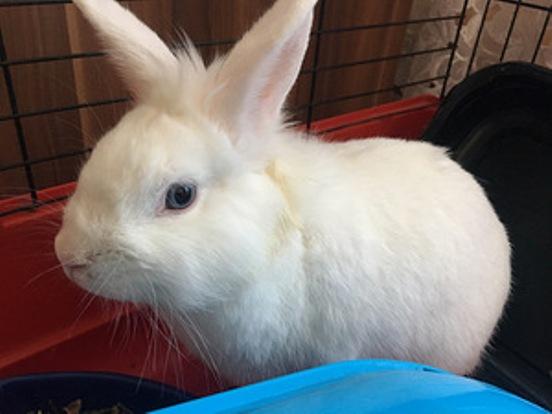
To obtain a full-fledged, healthy offspring, it is necessary to select producers with a body weight within the breed standard - 1.5 kg. This is the normal weight for a healthy rabbit. The maximum weight of a male is up to 2.5 kilograms. Being overweight also negatively affects the general health of the Polish rabbit and the ability to have offspring.
Diseases and breed defects
The vices of the Hermelin breed include non-standard fur color, for example, the presence of a yellowish or grayish shade, dullness of the coat. Defects are also considered to be deviations from the standard in the shape, size, length or thickness of the ears.
Diseases common to Polish rabbits:
- Ear mites.
- Felling of the coat.
- Dental problems.
- Respiratory disease.
- Infectious diseases.
- Urolithiasis with the formation of calculi in the bladder.
- Gastrointestinal Disorders.
- Spinal injury.
- Alimentary allergies.
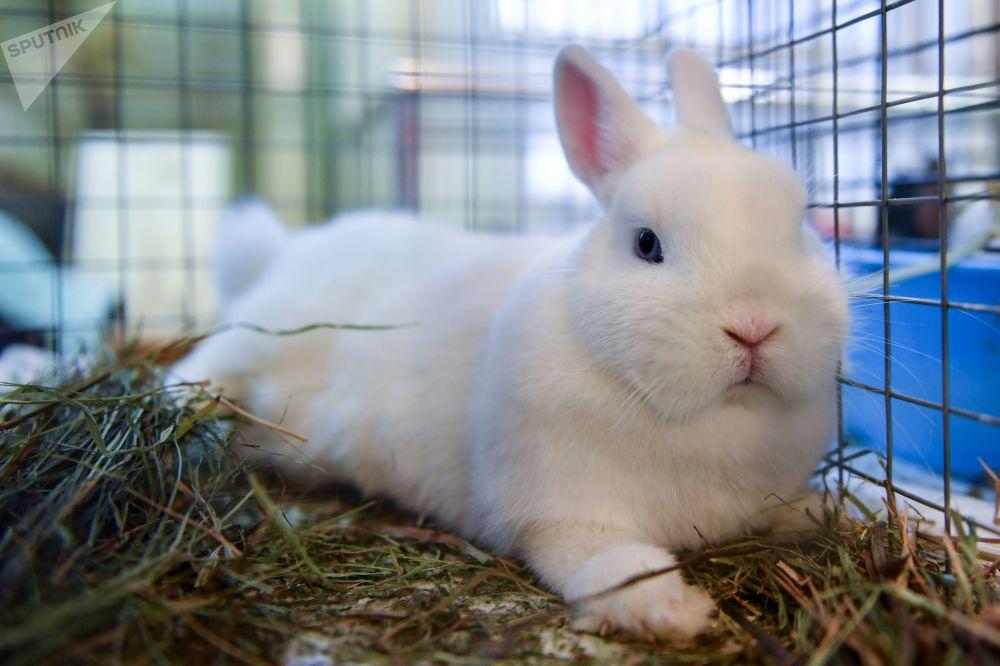
At the slightest suspicion that the pet has become ill, you should seek professional medical help from a veterinarian. Rabbits die very quickly without treatment, especially when it comes to infections and severe injuries.
How to choose?
When choosing a rabbit for keeping at home, it is important to find a good breeder, not an amateur, from whom you can purchase an animal with birth defects and hidden health problems. Outwardly, this may not manifest itself, but it will affect over time and may cause the premature death of the pet.
This is even more important if Hermelin is purchased for breeding purposes. Breeding rabbits should be unrelated, have sufficient fatness, but not obese. This is checked in the spine. If it is round, with protruding vertebrae, the rabbit is malnourished. In the event that the bones cannot be felt, it is overfed.
A healthy Polish rabbit is clean, fluffy, with clear eyes and clean ears. There are no tangles on the body, no discharge. The animal is vigorous, cheerful, not too shy, regularly going to the toilet and does not refuse food. Weight is within normal limits. The average life span of a hermelin is 5-6 years. Castration and sterilization can be extended to 8-10 years.
